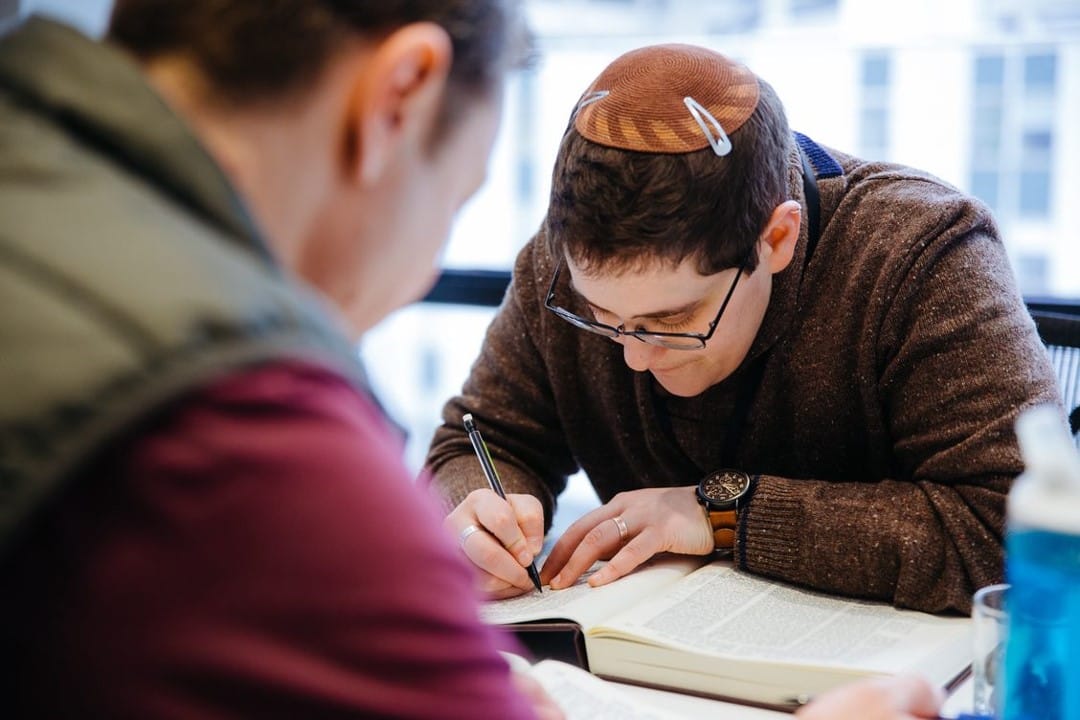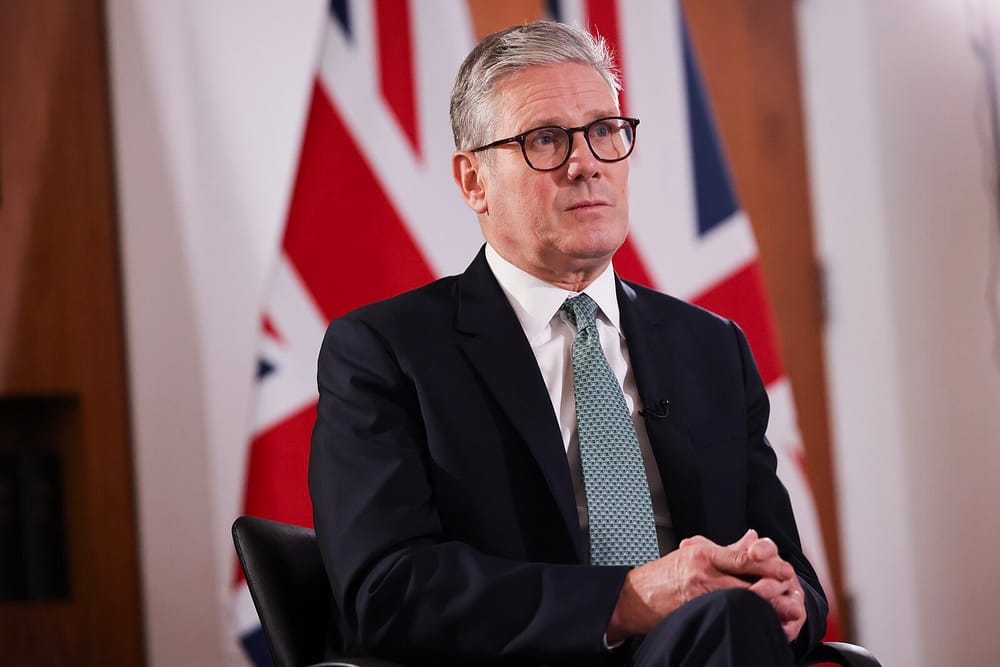Holy chutzpah
Vashti meets the people behind the creation of Halakhic literature by and for trans Jews.

On 26 March, the Trans Halakha Project’s Teshuva Writing Collective released its first eleven teshuvot (legal responsas) written by trans and non-binary Jews, providing halakhic frameworks, language and potential answers for trans Jews to live religious lives, located within the mesora (chain of tradition). The teshuvot cover a diverse array of questions, including whether it’s a mitzvah to transition, how trans women might practice niddah (laws of menstrual purity), and whether it’s permissible to immerse in a mikvah (ritual bath) with a binder. Along with these responsas – two more of which are forthcoming – the Trans Halakha Project published Tefillat Trans, a compilation of rituals and blessings for trans lives.
Though halakhic literature has been written previously about trans people, this project is the first instance of material produced by trans people, informed by their own lives, experience and knowledge. At the online launch, Laynie Soloman – co-director of the Trans Halakha Project (along with Rabbi Becky Silverstein) and associate rosh yeshiva at SVARA, which hosts the project – articulated why this initiative is so essential: “I’m tired of experiencing dysphoric halakha […] I want to experience, I want all of us to experience, euphoric halakha. Reading these [teshuvot] reminded me that we don’t need to be solved, we need to be free.”
As Soloman and many of the teshuva writers noted, there’s a vast difference between cis halakhic authorities dealing with transness as an issue to be solved, an identity to be either condemned or “permitted,” and trans Jews writing about, reckoning with, and celebrating what it means to be a trans person living within and practicing these traditions. These teshuvot, Soloman says, “are what happens when we stop asking ‘How can we exist?’ and start asking ‘How can we thrive?’” When asked what makes the teshuvot authoritative, Solomon responded emphatically: “You! If you use them, if you grapple with them, if you learn them – they are real.”
I spoke to three of the teshuva writers about their work and the thinking that went into it, with the hope that the more these pieces are learned, understood and implemented, the greater their power to shape a more liberated world will become.
Be Whole: A Halakhic Approach to Gender & Transition by Alexandra (Lexi) Rose Kohanski (she/her)
Lexi Kohanski is a trans female Ashkenazi Jew living in New York’s Washington Heights. She works as a Jewish educator, primarily to the queer and trans online Jewish community, and serves as director of online learning at The Torah Studio.
In her shita (which outlines a halakhic approach, in contrast to teshuvot which respond to specific questions), Kohanski was trying to understand “what it means to transition and be trans as a Jew in relationship with Hashem and Torah. I wanted to ground this intuition I had that doing a gender transition or doing acts that are involved in gender transition is a sacred project that is significant to my relationship with Hashem and also to my community as a Jew,” she explains.
The outcome was a two-part shita: “One is how do we think about questions of gender in halakha, and the second part is laying out my understanding of how transitioning is a mitzvah in the broadest sense of the word.”
Kohanski’s writing was first inspired by the Ramban’s commentary on the line תמים תהיה אם ה’ אלוקיך (“Be whole with Hashem your God”) from Deuteronomy 18:13, which he explains as an injunction not to listen to the decrees of the stars, and instead to be whole in our hearts with Hashem. “I read that and I was like, ‘That’s obviously about being trans.’”
The project took on a more halakhic focus after Kohanski read some of the existing teshuvot about trans people with a chevruta (study partner). “These things are very clever, and they’re probably not wrong in their internal halakhic reasoning and logic […] but they are wrong in that they [fail to understand] what being trans means and how gender works,” she explains.
Kohanski began writing an essay using the Ramban’s explanation of “being whole with God” as a means of understanding transition within a religious/halakhic framework. “Honestly,” she tells me, “transitioning is the thing in my experience of my life that feels the most like a commandment; and if it isn’t, then I have no personal experience of Hashem’s presence in the world and in my life, and that wasn’t something I was willing to accept was true.”
The shita argues that it’s a mitzvah for a trans person to take whatever steps of transition are feasible that will minimise their dysphoria and enable them to be more whole with God. Commenting on the value of this framework, Kohanski notes that the idea of a mitzvah “means there’s inherent meaning to each little step, and it takes it out of this impossible expectation of passing, of saying ‘the goal of my transition is to become a cis woman,’ which is the messaging that a lot of us receive. This puts it in a framework where each of these little things I’m doing is an inherently meaningful act of bringing something sacred into the world.”
Gender-Inclusive Mikvaot by Lara Haft Yom-Tov (they/them)
Lara Haft Yom-Tov is a rabbinical student, community organizer and Jewish educator living in Jerusalem. Their teshuva addresses the question of whether Jewish communities have an obligation to create gender-neutral mikvaot (ritual baths).
Mikvaot play a crucial halakhic and spiritual role in Jewish communities – for conversion, the keeping of niddah, immersing before holidays or important life events and more. “The reason this came up for me is because I and many of my trans and non-binary loved ones have had the experience of needing to go to the mikvah and having it be an extremely dysphoric experience,” they explain.
Initially, their plan was to write about what kulot (leniencies) trans people can use around mikvah, like using their bathtub. “But then I realized – why should it always be that trans and non-binary people are bending over backwards to try and squish ourselves into a Jewish system that feels like it wasn’t made for us in order to participate in basic parts of Jewish life?
“Instead of expecting trans and enby people to take on the burden alone,” Haft Yom-Tov continues, “our communities should be building a halakhic system that feels joyful and organic. So, I asked myself: “What obligations do Jewish communities have to make mikvaot accessible to trans and non-binary people?”
Making this case stems in part from a desire to shift the halakhic focus. “I think, right now, so much of the conversation about halakha is on the micro level, like what am I eating tonight for dinner, or what’s going on in my kitchen on Shabbat. That loses some of the most beautiful aspects of halakha – it’s supposed to be us in relationship with Torah figuring out how to be people in the world. You cannot just do that about your own micro behaviors. And I think trans and queer people have a lot to say about that because we are constantly thinking about how gender works in society. I always say halakha is a team project.”
Haft Yom-Tov and Rabbi Frankie Sandmel surveyed dozens of trans Jews about their relationship with niddah, and nearly half the respondents said that the biggest barrier to their practice is the lack of a safe, gender-affirming mikvah. “As long as these Jews are kept from observing mitzvot because of gender-binary mikvaot, the Jewish community as a whole isn’t fulfilling its obligation.”
Caring For & Removing Body Parts Related to Gender-Affirming Care by Willemina Davidson (they/them)
Willemina Davidson is a non-binary trans woman studying as a rabbinical student at Hebrew College in Boston, and currently based in Jerusalem as part of the Pardes Educators Program. Their teshuva addresses whether there’s a specific way to dispose of body parts removed as part of gender-affirming care, and once they are removed, how to conceive of or relate to those body parts – with a special eye turned towards the Jewish afterlife.
After concluding that due to a lack of tumah (impurity) concerns, there is no one required way to dispose of these body parts, Davidson addresses notions of the afterlife that conceive of bodily resurrection, and the question of how to avoid these body parts being regenerated. They propose a ritual of bitul eiver (nullification of a limb) modeled after bitul chametz, in which the limb is declared to be like dust and no longer part of one’s body.
Elaborating upon the focus on death and resurrection, Davidson explains: “I think the way we conceive of our afterlife says something about how we conceive of our life […] and so I really wanted to make clear that first of all trans people are whole, we’re not butchering ourselves as some people like to claim. I wanted to uplift our wholeness and place it within a Jewish context.”
This teshuva, they note, can be relevant not only to trans people undergoing surgery, but also amputees. “Plenty of people who undergo various forms of amputation also reach a point, even though it’s often traumatic initially, where they say, ‘This is my body, this is who I am, and it’s good,’ and I also wanted to lift up those bodies. All bodies are good bodies, y’know.”
The ritual and liturgy Davidson presents is concise, and the teshuva invites people to expand on the liturgy as they see fit. Commenting on this decision, Davidson says: “I wanted to start a conversation, I didn’t want to have the conversation. I don’t think if I’d created a full liturgy it necessarily would have resonated with the needs or desires of the community, because liturgy evolves through the collective. This is one small contribution to maybe getting that evolution started.”
The whole seudah
A common hope articulated by the writers is that these teshuvot and berakhot (blessings) can shape a more robust and liberated future for generations of trans people to come. Binya Kóatz, another writer in the collective, said at the launch: “I see [our project] as a holy chutzpah, to make ourselves as big as we can, so that several generations from now they’re not grasping for crumbs, they have a whole seudah – a whole feast.”
The project also speaks to a broader way of approaching halakha: understanding that it is most powerful and true when it is shaped and decided by the people it addresses. “Halakha has the potential to be liberatory and revolutionary,” Davidson notes, “even if it hasn’t always felt that way.”
Kohanski’s main hope for the project is simple: “That trans Jews should have better lives. And that we should have more sacredness in our lives, and more acceptance, and be loved and held in our communities; and through all of that, that we should know ourselves more deeply, and know Hashem more fully. I hope that putting this out there is a small contribution towards that.”▼
Lexie Botzum is a Torah learner, teacher and activist based in Jerusalem.
Author
Lexie Botzum is a Torah learner, teacher and activist based in Jerusalem.
Sign up for The Pickle and New, From Vashti.
Stay up to date with Vashti.



